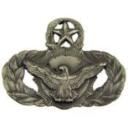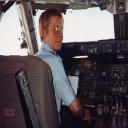Yahoo Answers is shutting down on May 4th, 2021 (Eastern Time) and beginning April 20th, 2021 (Eastern Time) the Yahoo Answers website will be in read-only mode. There will be no changes to other Yahoo properties or services, or your Yahoo account. You can find more information about the Yahoo Answers shutdown and how to download your data on this help page.
Trending News
When is manual control over and aircraft takenwhile landing?
Most of the Airbus and Boeing airplanes nowadays are equipped with autoland systems, but mostly all landings with good visibility and weather are done manually. My queries are
1) when does a pilot take manual control over the aircraft?
2) is it taken after establishing localizer and glide slope or are the respectives aligned manually?
3)If after in question 2, is the auto approach used to align it and does the control taken when the vertical diamond reaches the center point?
4) does the autothrottle system kept engaged till around above 20 feet over runway or all the way till the aircraft is on the ground or not used at all?
Thankyou in advance!
7 Answers
- Anonymous5 years ago
It is entirely over to the pilots, down to IFR minimums for the approach, unless doing an autoland at a properly equipped airport, which happens far more rarely than you might think!
Long haul pilots don't get to fly too many legs in a month and usually take what opportunities they can to ensure they have sufficient manual landing currency to stay operational.
For the same reason, we often manually fly a complete approach.
So the answer is that it can be anywhere from passing 10,000 feet to passing 100 feet, or on Autoland, not at all!
All landings are, of course, highly monitored and a simple button press from full control by the pilot.
Auto-throttles are usually used right down to the flare, simply because they make speed control easy.
- JetDocLv 75 years ago
Fully automated landing systems are only available at a few major airports around the country. Doesn't matter how the AIRPLANE is equipped. The AIRPORT must ALSO have the proper nav aids and radio transmitters to make the system work.
The great majority of instrument landings are flown on approach to established minimums only, and then the pilots MUST take control and land the aircraft manually as soon as they can see the runway.
- Skipper 747Lv 75 years ago
I often flew approach and landings manually from speed reduction 250 KIAS at 10,000 feet MSL -
I enjoyed the practice -
It is up to the pilot to decide "when" to handle the airplane manually -
As per the applicable limitations of the autopilot systems and meteorological conditions -
There is a minimum altitude/height specified - either DA or DH -
Cat.II ILS is 100 feet DH -
With a Microsoft flight simulator game, you disconnect A/P and A/T when you want -
Source(s): Retired airline pilot - Timbo is hereLv 75 years ago
1. When he want to or not at all - there is usually a choice
2. See above answer 1.
3. No - again see above
4. Autothrottle can take care of the whole thing if required, even adding reverse thrust when the spoilers are armed and autobrake is set
- How do you think about the answers? You can sign in to vote the answer.
- Angela DLv 75 years ago
the pilot will fly the plane manually whenever they decide they want to. pilots are pilots because they like to fly airplanes.
airline operating procedures will call for automation in certain circumstances. sometimes too much (cf asiana 214). category iii ils landings must be done automatically because there isn't enough visual reference for the pilot to fly the missed approach manually.
- 5 years ago
its all auto the pilot is just there incase anything goes wrong and to start the engine.






